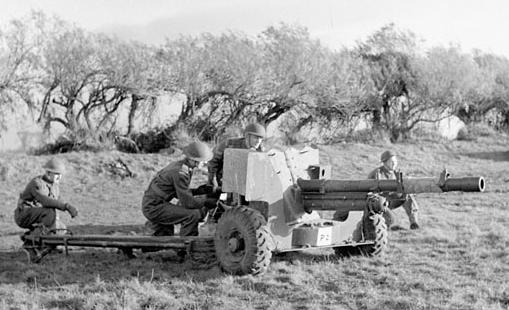FJAG
Army.ca Legend
- Reaction score
- 11,391
- Points
- 1,160
Chris Pook said:Why is the response to a more powerful tank a more powerful tank?
Isn't the desired endstate an elimination of the threat that the more powerful tank provides?
Yes, it makes sense to me that a tank should be able to defeat the threats it encounters on the field and so a tank should be able to defeat a tank. But what is the purpose of the tank? Is it just an anti-tank weapon? Or does it bring some other capabilities to the all-arms team?
And yes, the artillery did supply tubes with specialized targeting capabilities for General Support, Anti-Air and Anti-Tank but wasn't that more a function of the technology of the time requiring a gun to deliver enough energy to defeat the targets in question at the necessary ranges? Guns big enough that they had to be transported on wheels and hauled by an internal combustion engine.
Now some of those targets can be defeated at useful ranges by weapons that can be carried on the backs of infanteers making it possible for the infanteers to eliminate threats they previously had to rely on supporting arms to manage.
I am still of the belief that the answer to a squadron of cavalry is not a squadron of cavalry but a well drilled and disciplined bunch of archers.
And while in the realm of silly buggers and good idea fairies it occurred to me some time ago that the Carl Gustav, the LAW and the ATGMs are single shot weapons. We have drills for single shot weapons. If you want a refresher head on down to Kingston and watch the Fort Henry Guard. We might want to ditch the red coats and open up the spacing a bit but volley fire, rolling fire, fire by ranks, by sections, platoons, fire and retire.... especially with PRRs available .... all seem to me to be worth exploring as infantry tactics for the anti-tank platoon.
The Carl G and the ATGM systems are both reloadable but that's besides the point. Anti-tank guns weren't part of the artillery because they had tubes and wheels (although that might have tipped the balance at the time) They were not part of the infantry because the role of the infantry was and remains to close with and engage(destroy) the enemy. Anti tank weapons, on the other hand, (whether tube or missile) were and are designed for a stand-off role and were deployed in separate troops/batteries etc so that their operators could be trained in the tactics necessary to do that (and those tactics vary depending on the phase of war) and could be moved around the front to concentrate their effort in the areas with the most advantage for their employment.
IMHO there is clearly a role for some form of anti-tank weapon with the infantry but a rifle platoon does not need a TOW that can reach out to 3,750 metres (such as on the Bradley). Even the Javelin reaches out to 4,750 metres which is well beyond the range of most other infantry weapon systems. There will not be many positions where a rifle company is deployed (or at least shouldn't be deployed) where it has a visible engagement range that far.
Don't get me wrong. I'm not saying that you shouldn't have anti-tank weapons in the battalion, I just don't see the heavier long range stuff as a weapon that you pass around to any old person or platoon or even company.
Right now every US Army light/standard rifle platoon has two or three Javelins in its weapons squad (depending on the ref material you look at) and every light/standard infantry battalion has a weapons company with 16 squads of which eight are armed with both TOW launchers and Javelin launchers. Every Stryker battalion has three 105mm Mobile Gun Systems per rifle company and each Stryker Rifle platoon has three Javelin launchers (there's no separate weapons company in a Stryker battalion). US Combined Arms battalions have no weapons squads, platoons or companies, just rifle platoons mounted in Bradleys (with TOWs and Javelins) or pure tank platoons.
By having it all parcelled down like that you loose the flexibility to mass your anti-tank resources and will probably have many of your AT resources mispositioned and unengaged while rifle company commanders will have to concern themselves with a deep battle (4-5 kms out if terrain permits) as well as the close in battle.
Longer range anti-tank systems should not be considered as "local defence" tools for the rifle company but a modular resource which a brigade group can allocate and position around it's area of operations just like tube/rocket and anti-air artillery (when available) is. :2c:
On the other hand, the current US, British and Canadian armies beg to differ. So what do I know! ;D
:subbies:


